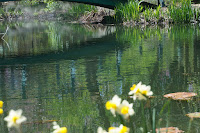A few months ago, I wrote about texture in photography. Patterns are very similar, but I discovered far more information about them than I did about texture. Trying to limit the length of these blogs can be challenging. There is so much information available about this topic!
Patterns are everywhere. They are on objects and even inside of us, like the blood vessels in our bodies. There are several areas where patterns are key. I am not a seamstress, but sewing a shirt without a pattern to follow would be unwise!
Patterns are powerful! They set up expectations, make connections, and inspire burning questions. They can be events that regularly repeat themselves, trends in which events rise or fall over a prolonged period, seeing relationships that create new connections, or they can emerge from seeing the larger picture.
Pattern recognition was vital to the survival of our ancestors, allowing them to identify poisonous plants, distinguish predator from prey, and interpret celestial events. Today, it plays new but just as essential roles in diagnosing diseases, 💉💊inspiring fresh ways to safeguard data, and discovering new planets.
The ability to see patterns results from the brain's natural tendency to find order in chaos. This is how we make sense of the world and learn.
The best thing we have going for us is our intelligence, especially pattern recognition, sharpened over eons of evolution (Neil deGrasse Tyson, 2015). According to IQ test designers, pattern recognition is a crucial determinant of a person's potential to think logically, verbally, numerically, and spatially. Compared to all mental abilities, pattern recognition is said to have the highest correlation with General intelligence (Kurzweil, 2012). The ability to spot existing or emerging patterns is one of the most, if not THE most, critical skills in decision-making, though we're mostly unaware that we do it all the time. (Memis, 2019)
📘📩📞 Linguistics uses patterns to develop communication. The patterns are predictable formations in a language, whether it is read or heard, that construct its words and sounds and give them meaning. Rules of grammar, syntax, and semantics are linguistic patterns.
There are patterns in music, such as the use of refrains and choruses in vocals. 🎤🎭🎶
Mathematics depends on numerical patterns or sequences, as in geometry, cube numbers, and square numbers.🔟
In psychology and cognitive neuroscience, pattern recognition describes a process that matches information from a stimulus with information retrieved from memory.
💽📠 Technology would not be possible without the use of patterns. The ability to code and program has a number of uses for patterns. For example, design patterns are typical solutions to common problems in software design. Each pattern is like a blueprint that can be customized to solve coding design problems.💻
👪 Children can find help to make predictions with the use of patterns because they begin to understand what comes next. They also help children learn how to make logical connections and use reasoning skills.
Apophenia, is a psychological condition which is characterized by seeing patterns in unrelated things. Anyone can experience this, and it is not uncommon.
 There are two basic types of patterns in art: Natural and man-made . They can be regular or irregular, organic or geometric, structural or decorative.
There are two basic types of patterns in art: Natural and man-made . They can be regular or irregular, organic or geometric, structural or decorative.

positive or negative
repeating or random.
It looks like some critter's chomping made this intricate design.

I love the ocean and subjects with water. I find them to be an almost unlimited source for pattern photography.
So, what is its use in photography?? 📷 Pattern in Photography is a regularity within a scene. Its elements of the scene that predictably repeat themselves. Pattern photography gives our viewers a different perspective and adds to a stunning image composition. The image will show texture, a unique color, and angles. They come in many forms and are highly pleasing to the eye. 👀 It is anything repetitive that turns the subject from its innate quality into something more abstract so people will look and respond more to the pattern and shape that it makes and less to the subject itself (from Digital Photo School, Anthony Epps)
Visible regularities of form can be found in the natural world. These recur in different contexts and can sometimes be modeled mathematically. They include symmetries, spirals,  meanderers, waves
meanderers, wavescracks 
and stripes.
Man recreates what he observes in nature. Here are some man-made things with patterns. Some of these photos show more than one pattern. Can you find them? Are you able to identify the patterns??
I like to incorporate shadows that make interesting patterns.
Artisans from painters to hair dressers, architects and landscapers, often invest much talent, patience and energy to add patterns to our world.
Here are a few more.These are spheres within a sphere.
Some of these are just some of my pattern discoveries.
I hope you are more cognizant of patterns and the part they play in our lives. Maybe you will feel encouraged to go on your pattern safari to shoot the big game!Credit where credit is due.
I could not have authored this article without the help of information obtained through Google, including an excellent article by Robert Barkman, Professor Emeritus at Springfield College Massachusetts: See The World Through Patterns
Information obtained from Wikipedia also proved invaluable.























.JPG)











